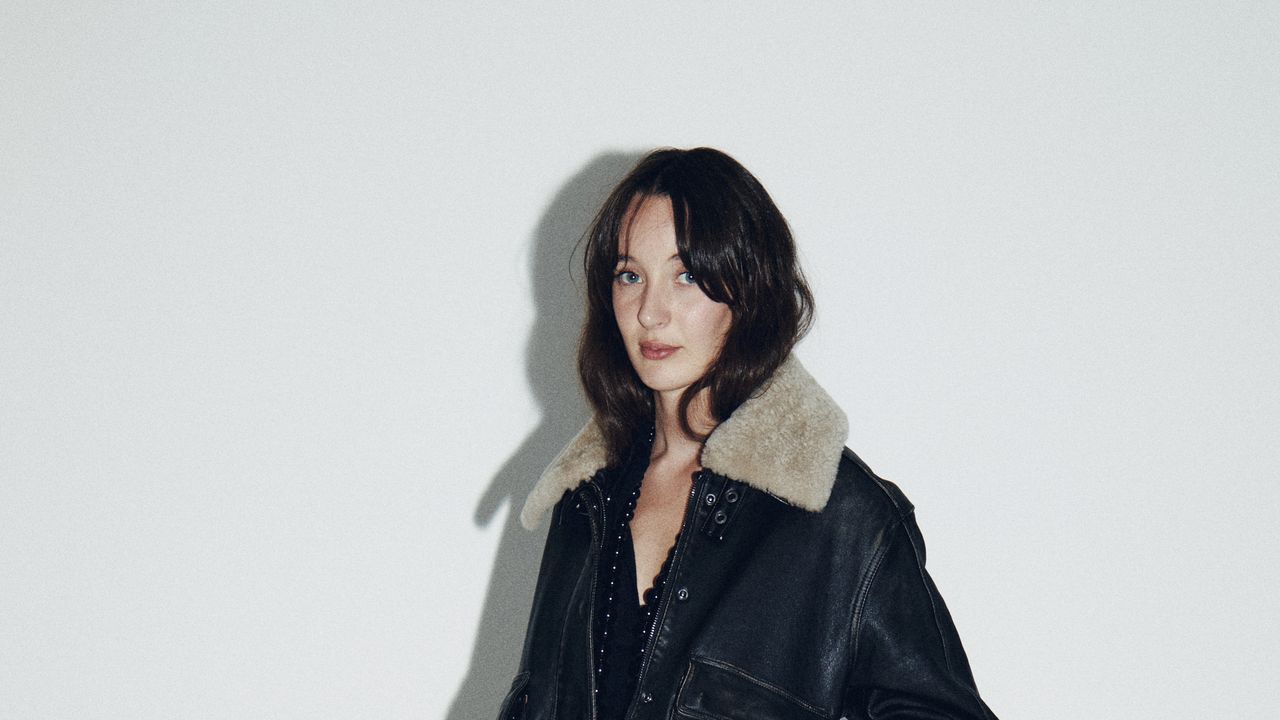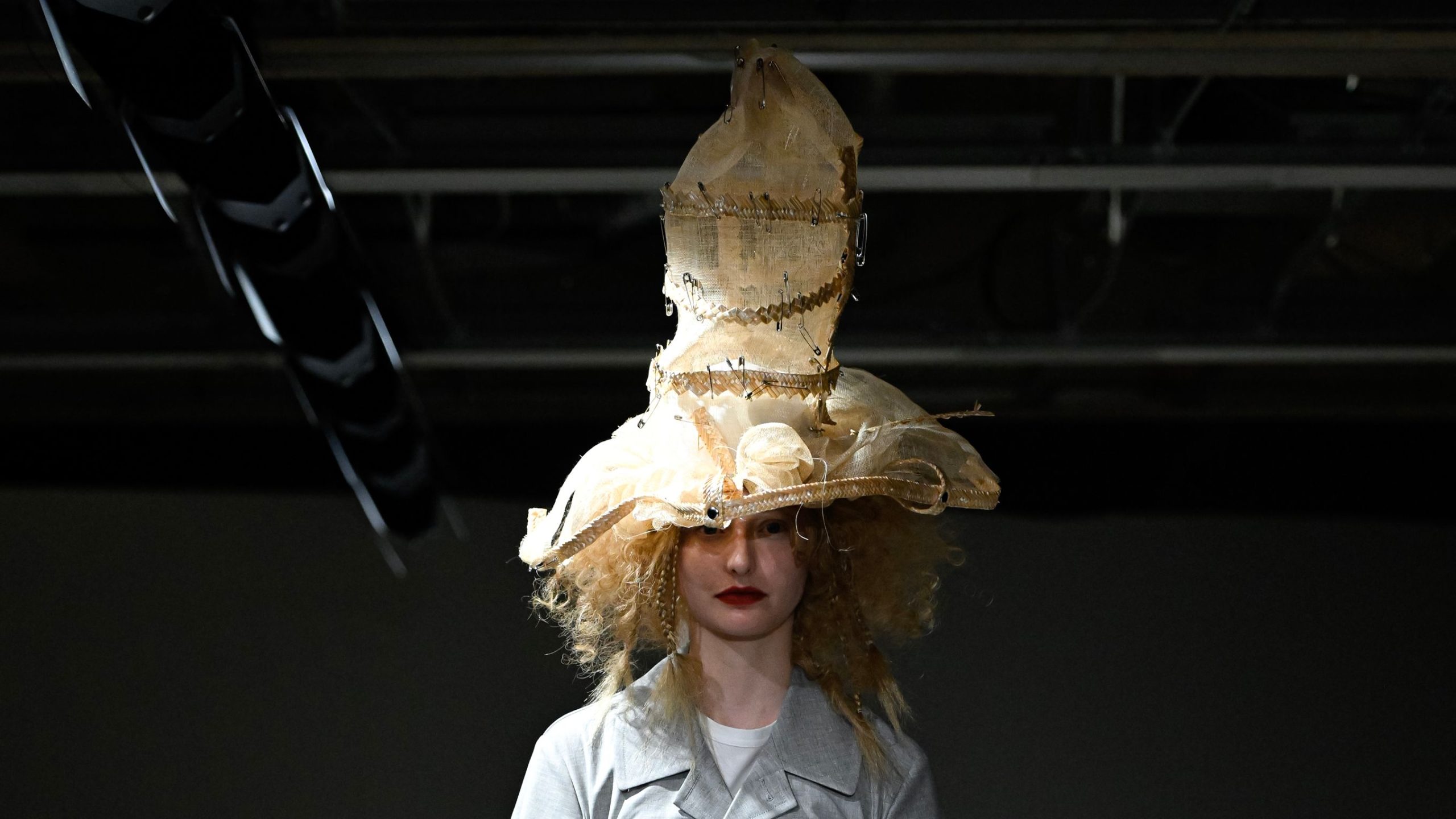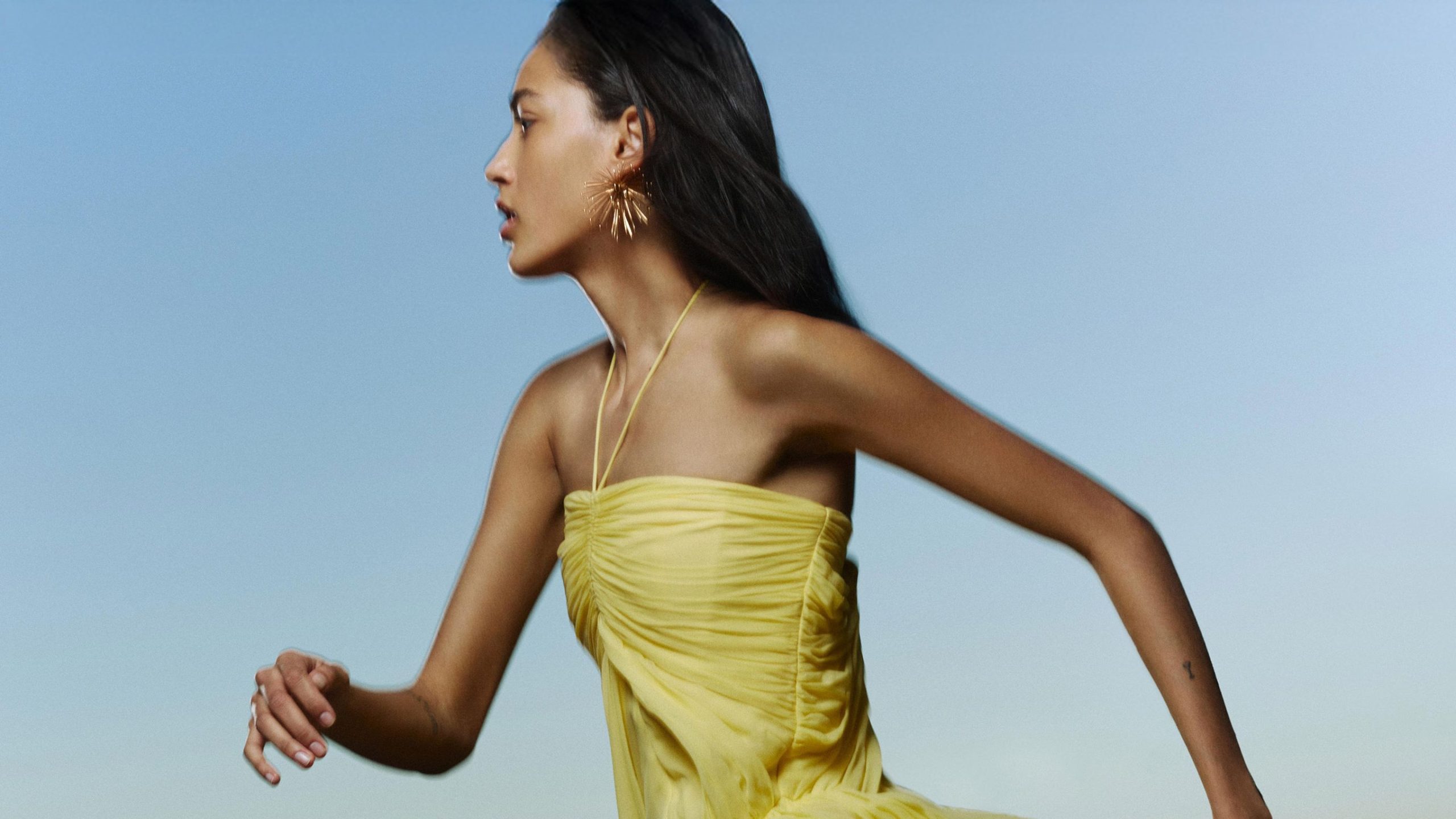For almost 250 years, Sloane Street has been a cultural and commercial anchor at the heart of Chelsea, London. Property manager, investor and developer Cadogan, which operates across Chelsea’s Duke of York Square, Sloane Street, Pavilion Road and King’s Road, is behind the transformation of these neighbourhoods into luxury retail destinations.
This year marks the completion of Cadogan’s £46 million upgrade to Sloane Street, which underscores a broader industry shift to elevating retail locations into destinations. To celebrate the street’s transformation into an elegant green boulevard, October saw Sloane Street become Frieze London’s first Destination Partner, with a ‘Modern Nature’ themed art trail spotlighting how urban elegance and green space can coexist and offering visitors an immersive and new way to navigate the neighbourhood.
This month also saw the arrival of major new stores from British-Turkish designer Erdem, Swedish fashion house Toteme and a pop-up activation from cult Italian lifestyle brand Cabana – with Australian luxury womenswear designer Zimmerman following later in the year.
Destination retail — with its focus on seamlessly integrating immersive customer experiences with elevated hospitality, food and beverage — is emerging as the most resilient format in the luxury sector. According to BoF and McKinsey’s The State of Fashion 2025 report, 75 percent of shoppers are likely to spend more after receiving high-quality service from store personnel.
As consumers increasingly seek more from their shopping experiences, Cadogan’s investment in the surrounding environment becomes even more compelling. Sloane Street’s redesigned boulevard reflects this shift — offering a vision of luxury rooted not just in products, but in the setting, atmosphere and community.
Today, with inbound tourism to Europe forecast to grow by 6 percent annually, according to the European Travel Commission, Cadogan’s focus on memorable experiences and seamless hospitality positions the district to attract international and local shoppers — and cater to their evolving interests.
Now, BoF sits down with Hugh Seaborn, CEO of Cadogan, to explore how Sloane Street is stepping into its next chapter and reshaping its approach to luxury, culture and community for a new era.
How does Sloane Street’s transformation balance heritage and innovation?
Sloane Street has long been a destination for luxury products and experiences — a place to be seen. Our transformation honours that heritage while looking forward, with a focus on craftsmanship, creativity and innovation. We wanted to create an environment that amplifies and celebrates these elements.
At the same time, we brought in architect John McAslan and landscape designer Andy Sturgeon, to design layered planting of diverse and climate-resistant flowers, shrubs, with the addition of over 100 new trees. These changes have a measurable impact: we anticipate a 175 percent increase in Biodiversity Net Gain and a 33 percent improvement in pollution removal. So, it’s not just about aesthetics; it’s about sustainability, climate resilience and creating a more comfortable and inviting public space.
Complementing this greening, we have curated hospitality experiences that encourage visitors to stay, explore and engage. Hotels, restaurants and bars — including The Cadogan Hotel, renowned hotelier Jean-Louis Costes’ and designer Franscois-Joseph Graf’s hotel, bar and dining room At Sloane and Beaverbrook Town House’s Japanese restaurant The Fuji Grill — create a holistic day-out experience, making the street more than a shopping destination.
In essence, the transformation amplifies Sloane Street’s heritage while adapting it for a modern, forward-looking audience.
What makes an effective destination retail strategy today?
It’s a combination of elements that work together. First, curated retail that complements the street and the surrounding brands. Second, a diverse mix of hospitality, food and drink, including nightlife options that appeal to a variety of audiences. And then third, investment in public spaces — beautiful, comfortable pavements and streetscapes that encourage people to linger.
We think of ourselves as stage managers: we create the environment that allows brands to shine. Shopping is just one part of the experience. The holistic environment — the restaurants, bars, cafés, cultural anchors and public spaces — is what makes the street feel vibrant, inclusive and welcoming.
And, of course, it has to resonate with the local community — as that connection is essential to the street’s vitality and longevity
How is Sloane Street shaping the future of luxury retail and experiential shopping?
The pandemic really accelerated the integration of digital and physical retail. Retailers now understand the dynamics between online and in-store experiences and the most successful ones use their stores strategically to support both. Time and again, we are finding that physical retail presence boosts online sales.
But beyond sales, it’s about connection. People come to Sloane Street not just to transact, but to experience, interact and connect with others. You see a queue coming out of Roasting Party, on Pavillion Road, just off Sloane Street, because it’s really good coffee. People go there and they’ll start talking in the queue and find out they’re neighbours. You never know what that leads to.
Community is at the centre of what we do. If the street thrives, the surrounding community thrives and vice versa. That makes Sloane Street an ideal space for experiential retail and immersive brand partnerships — where the emphasis is on engagement, storytelling and creating memorable moments.

How do cultural partnerships like Frieze enhance the Sloane Street experience?
Chelsea has a long history of cultural creativity — from Pre-Raphaelites to punk rock, from Oscar Wilde to The Rolling Stones. We aim to honour that legacy while engaging contemporary audiences. One of our most exciting partnerships is with Frieze. The Modern Nature trail, in collaboration with them, is a perfect example of how we blend culture, heritage and sustainability.
Community is at the centre of what we do. If the street thrives, the surrounding community thrives and vice versa.
It allows us to showcase our greening efforts in a playful, engaging way, while celebrating Chelsea’s rich and creative history. The trail invites visitors to interact with art in the public realm — encouraging exploration and curiosity beyond traditional gallery spaces. It’s about creating moments where culture and daily life intersect — people can stroll along Sloane Street, enjoy the luxury boutiques and simultaneously engage with cutting-edge contemporary art.
Frieze also helps attract a new generation of creatives and culturally minded visitors to the area — reinforcing Sloane Street’s role, not just as a shopping destination, but as a hub of cultural dialogue and experimentation. The energy it brings spills over into the street itself — people come for the art, but they also experience the restaurants, hotels and other activations we’ve curated.
How do public events enhance the atmosphere and engagement on Sloane Street?
Other cultural activations include Chelsea in Bloom, which we run the same week as the Chelsea Flower Show at the end of May. It gets a fantastic response and makes the area the largest free flower festival in the country. We have people coming just for the excitement of that — they’re not shopping, they’re not eating — they’re just coming for the flowers.
We staged an inaugural Chelsea Arts Festival last month, and it went off with a much bigger bang than even I had anticipated. It’s been very successful and that’s because there are so many people in Chelsea who are interested in culture — we can draw out and connect with this experiential side of luxury retail.

What criteria do you use to curate brands and activations that feel both contemporary and timeless?
It’s layered and complex. We always prioritise the fit to the area before the financial return. We look for complementary uses that align with our values around community and culture. Our hotel partners — The Cadogan, At Sloane, Beaverbrook Town House — understand their audiences intimately and create immersive experiences that feel authentic and distinctive.
Sloane Street’s transformation is part of a broader effort to invest in and reinvigorate the neighbourhood. On the King’s Road, The Gaumont has become a new focal point, bringing together a mix of independent studios, a cinema, and a major public art commission behind its restored art-deco facade. It’s a major part of an ongoing plan to reimagine one of the world’s most recognisable high streets for the future.
Frieze helps attract a new generation of creatives and culturally minded visitors — reinforcing Sloane Street’s role as a hub of cultural dialogue and experimentation.
It includes Bookbar — where people are sitting on sofas, drinking wine, reading books, or there might be a poetry reading next to them — New Forms — a listening bar and vinyl shop, where visitors can enjoy coffee or wine while discovering music — and Artplay, where artists of any experience level can create and take home their work.
These spaces offer immersive, participatory experiences and reinforce a sense of community while complementing the luxury environment. We have an upcoming addition, The Trafalgar Pub, which will feature jazz, comedy and rock sessions — blending nightlife, performance and hospitality in one place.
Looking ahead, what role do you envision for Sloane Street in London’s wider luxury and cultural ecosystem?
Sloane Street is both globally recognised and intimately local. Many key customers live nearby, so we curate spaces that balance luxury and accessibility. The street creates a stage where brands, culture and community intersect.
Complemented by Pavilion Road with its artisanal offerings, Sloane Street remains a cornerstone of London’s luxury and cultural ecosystem — internationally appealing, yet deeply rooted in its local neighbourhood.
Our goal is to continue amplifying its heritage, celebrating creativity and offering a destination where people can experience both luxury and culture in an integrated, immersive way.
This is a sponsored feature paid for by Cadogan as part of a BoF partnership.


